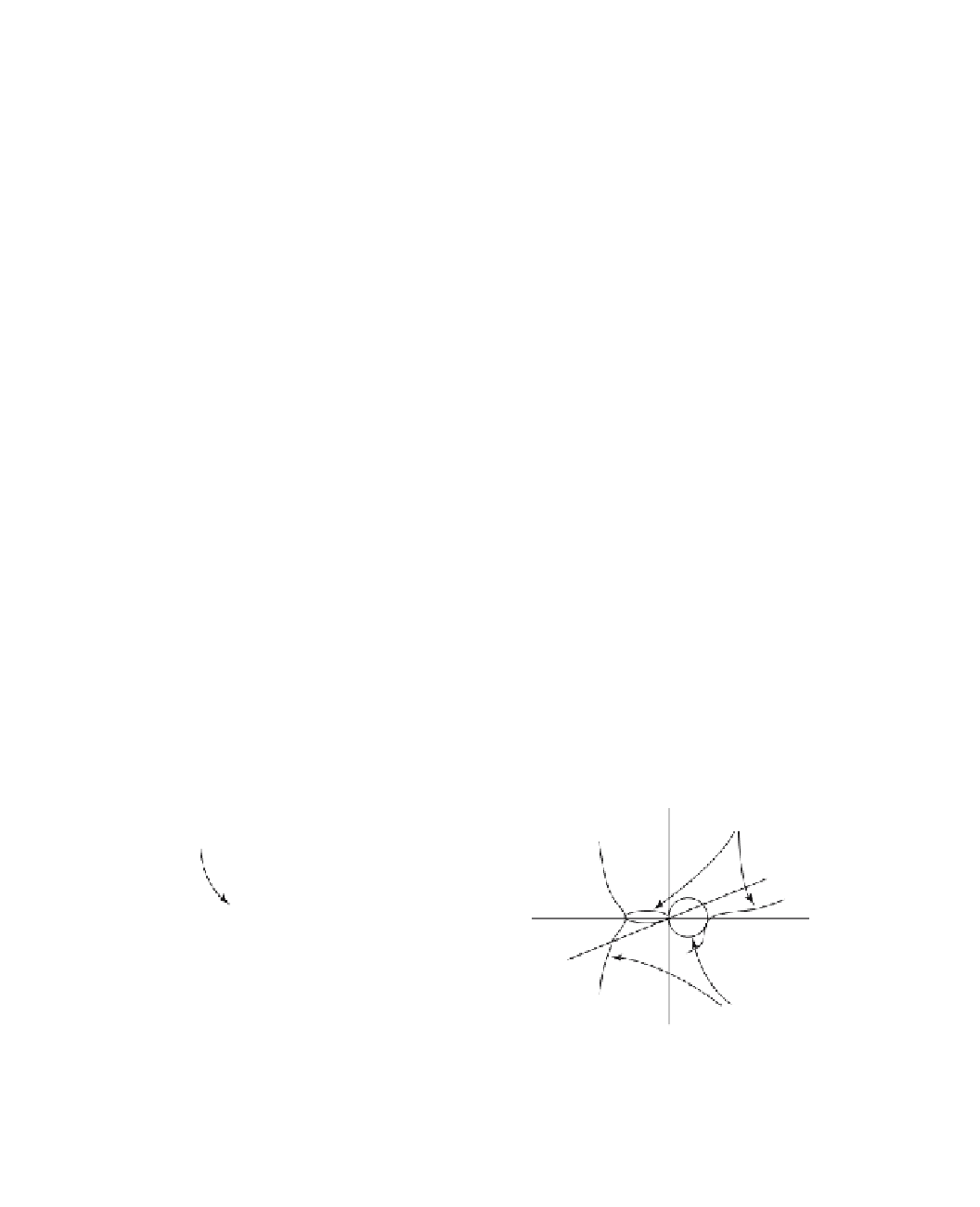Graphics Reference
In-Depth Information
2
2
3
2
zwu vu
-=-
3
-
(10.14)
and
2
3
2
zw
=
3
u v
-
v
-
v
.
(10.15)
When v = 0, this reduces to
2
2
3
zwuu
-=-
(10.16)
and
zw = 0.
(10.17)
If w = 0, then we get the equation
2
=-.
zuu
The graph of this equation is shown in Figure 10.4(a). If z is set to zero instead of w,
then we get a mirror image of this graph and so the complete picture for the case
v = 0, as specified by equations (10.16) and (10.17), is as shown in Figure 10.4(b).
Because the tangent lines of the two branches approach the z and w axis, respectively,
and since the z-w plane corresponds to a unique point
p
•
in
P
2
(
C
), the graphs look
topologically as shown in Figure 10.5(a). By next considering the three-dimensional
slices v = e, one can show that they fill a torus. See Figure 10.5(b). Therefore, thought
of as living in
P
2
(
C
) the space V(Y
2
- X(X
2
- 1)) is topologically a torus.
After these examples of projective complex plane curves, is there an underlying
general result? Yes!
10.2.5. Theorem.
Let f(X,Y) be a nonconstant polynomial in
C
[X,Y]. If f is irre-
ducible, then the closure of V(f) in
P
2
(
C
) is a compact connected orientable surface
w
z
2
= u
3
- u
z
z
2
= u
3
- u
z
u
u
-1
1
w
2
= u - u
3
(a)
(b)
Figure 10.4.
Example 10.2.4.



